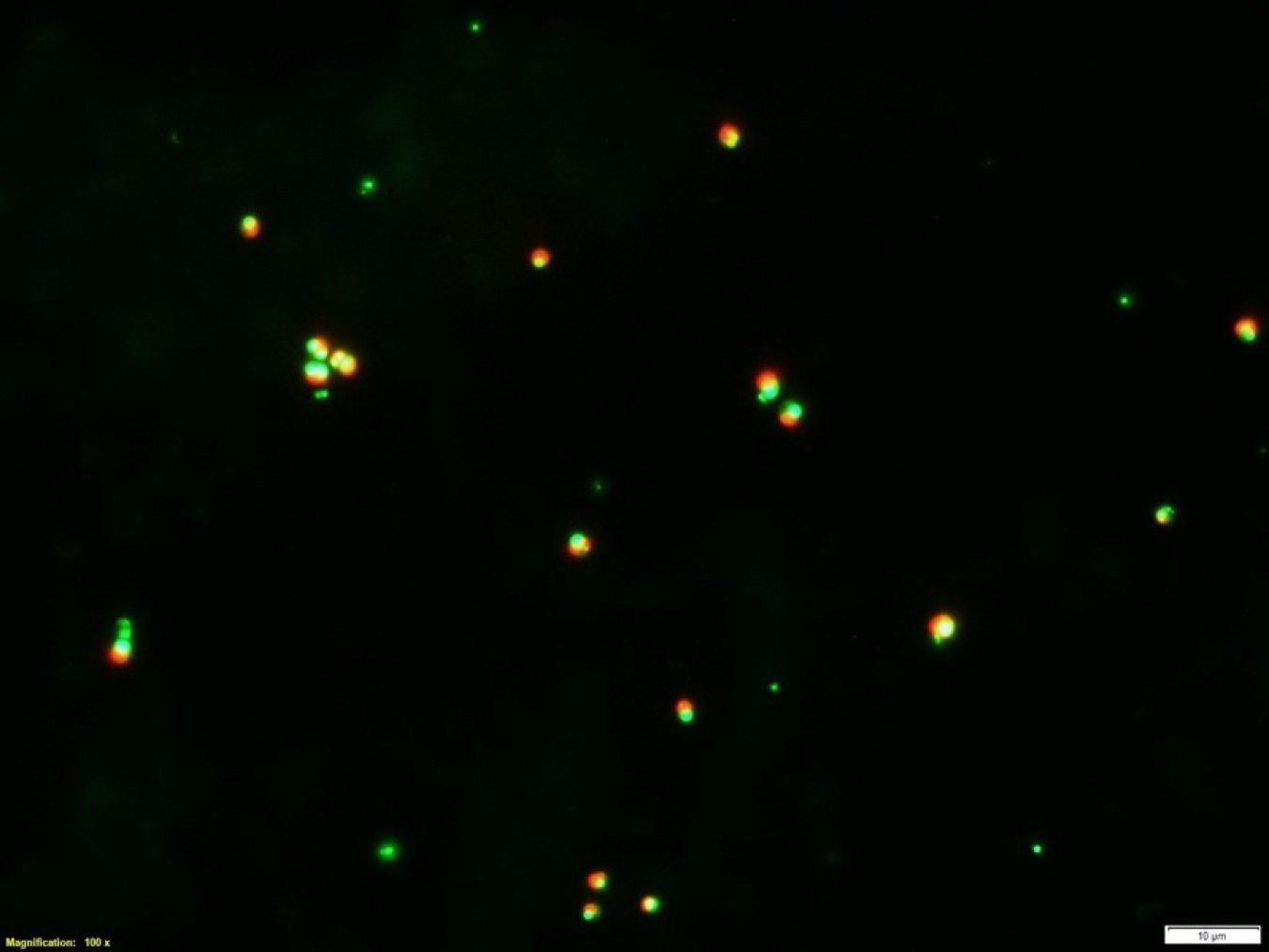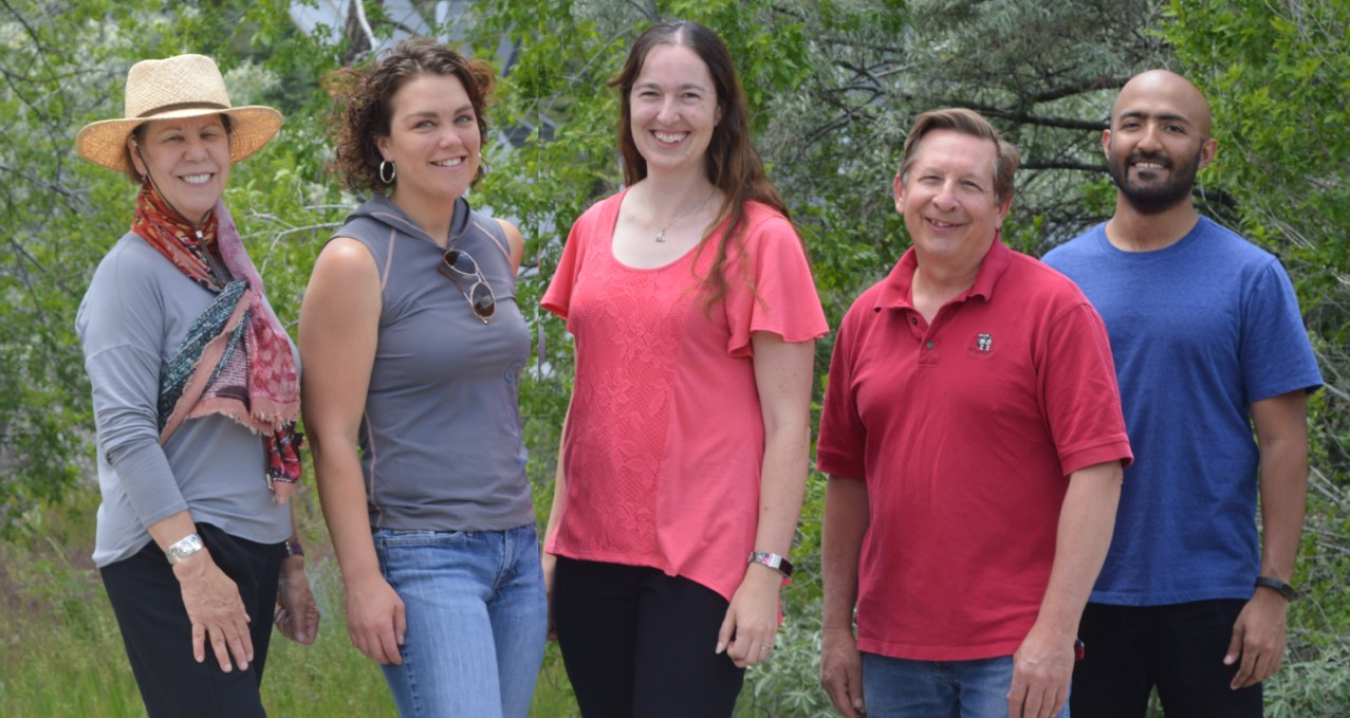Bioprose Blog: New LANL research enables quick detection of algae pond problems and streamlines screening of potential biofuel-producing algae candida
July 21, 2020
Author: Sheila Van Cuyk, Laboratory Relationship Manager for BETO Programs at Los Los Alamos National Laboratory
Read Sheila's bio ►
Meet the other bloggers ►
Return to Bioprose blog ►
Bioprose Blog
A challenge for algal biofuel development is finding strains of algae best suited for producing copious amounts of oil quickly and under industrial-scale conditions. Maintaining pond health is also challenging—deteriorating health in a small fraction of algal cells within a pond can quickly lead to the death of the entire pond’s population.
To overcome these challenges, Los Alamos National Laboratory (LANL) scientist Christina Steadman and her team designed a process to optimize algal physiology and metabolism in cultures by interrogating specific characteristics of the algae cells. The process uses flow cytometry methods and offers two major benefits: the LANL team can quickly detect potential pond problems, and the process helps streamline the screening of potential algae candidates for biofuel production.
Glowing with Possibilities
To fast-track the process of finding good algal strain candidates and to understand their complex metabolic interactions, the LANL team developed new fluorescence-based methods to rapidly process many samples (high-throughput) using flow cytometer instruments. This involves using commercially available glowing probes that attach to target molecules inside algae cells—each target corresponds to a different desired characteristic or feature of algae. The flow cytometer illuminates these glowing probes and takes a measurement of how many cells are associated with each probe or exhibit a particular feature.
For example, one probe attaches to lipids, which demonstrates that algae accumulate lipids (the precursors of biofuels) and indicates nutrient utilization and stress. Five additional probes give a bigger overall picture of algal health and function. The six probes report on the following characteristics:
- Accumulation of lipids
- Cellular viability
- Membrane permeability
- Intracellular pH
- DNA content
- Accumulation of reactive oxygen species.
The LANL team focused their suite of probes to assess the platform strain Picochlorum soloecismus, an algal species selected as a top candidate for biofuel production by the National Alliance for Advanced Biofuels and Bioproducts. Once the method was optimized, they were able to use the probes to assess these features in other, less-understood strains, demonstrating that the suite of probes is useful as a wider screening tool.

Microscopy images of P. soloecismus. Green fluorescence indicates staining of neutral lipids by the fluorescent BODIPY dye and red fluorescence naturally occurs from chlorophyll in the chloroplast morphology. Photo credit: Claire K. Sanders
Enhanced Traits Require Enhanced Data Acquisition
The LANL team has started screening many algae species using the probes to find those best suited for algal biofuel production—including those with high growth rates that efficiently use nutrients and have a high tolerance to environmental variability, including stress, all with low input costs for cultivation.
In their initial experiments, three different isolates of P. soloecismus were investigated to understand their response to nitrogen starvation, which can cause an increase in lipid accumulation. Each isolate was assessed with all six probes to gain a more thorough understanding of how the algae react to the availability of nitrogen. Researchers tracked algal physiology and function within the isolates to determine if any were better performers; one isolate outperformed the rest by growing larger and accumulating more lipids.
These characterization methods are being used to screen and evaluate features of other algal genetic mutants to determine the best performers with enhanced productivity. They increase the throughput and provide greater detail over current state-of-the-art methods for screening algal biofuel candidates. These extra details are useful given the genetic and morphological diversity of algae. LANL researchers are currently using the probes to optimize growth and productivity in Nannochloropsis salina and Tetraselmis striata, two species that are very different from P. soloecismus, but produce high amounts of lipids that could be useful for biofuel production.
Early Detection for Algae Health
High-throughput platforms for assessing health could improve cultivation at algae farms. Further, the methods described here provide a valuable understanding of the characteristics that are most important for algae health. Using the suite of probes, researchers can screen a sample of pond water every day to look for any algae that show signs of being unhealthy. These signs, such as sub-optimum pH or metabolic activity, would be an early indication of deteriorating pond health.
This kind of daily screening of algae ponds is valuable so that entire ponds are not lost. And when scaling up to industrial algal production, rapid and easy screening is absolutely critical.

LANL Team (from left to right): Babs Marrone, Christina Steadman, Claire Sanders, Scott Twary, Shounak Banerjee. Photo credit: Elisa Cirigliano
Dr. Sheila Van Cuyk

Dr. Sheila Van Cuyk is the Laboratory Relationship Manager for Bioenergy Technology Office programs at Los Alamos National Laboratory (LANL). She is a scientist in the Bioscience Division, LANL’s Biofuels Program Manager in the Applied Energy Program Office, and a National Security and Defense Program Manager for Global Security.
Sheila has a background in molecular biology and environmental engineering and has over 15 years of experience developing innovative interdisciplinary solutions to complex problems. Prior to her current role, she fulfilled an Intergovernmental Personnel Act billet as a Program Manager at the Department of Homeland Security, Science and Technology Directorate working in the areas of biological threat detection and biosurveillance.
Sheila completed her M.S. and Ph.D. in environmental engineering from the Colorado School of Mines and her B.S. in biology from the College of William and Mary.


